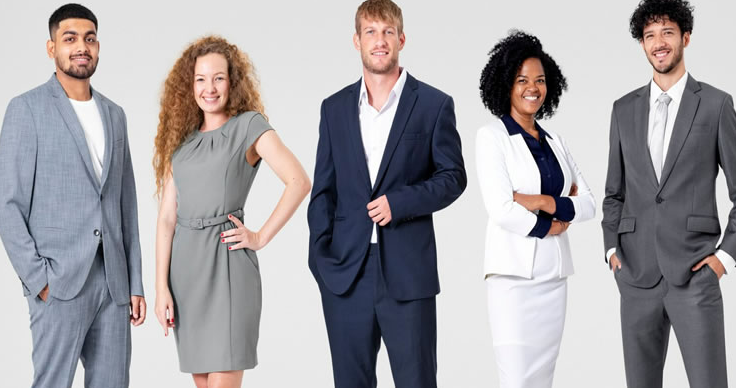In today’s professional world, business casual attire has become increasingly popular, offering a balance between formality and comfort. Understanding the nuances of this dress code is crucial for individuals who want to make a positive impact in the workplace while feeling at ease. In this article, we will explore the essential elements of business casual attire. Hence, helping you create a polished and professional look that aligns with your company’s culture.

The Importance of Dressing Professionally
Dressing professionally goes beyond just wearing the right clothes. It is a way of presenting yourself as a competent and reliable individual. By adhering to the business casual dress code, you can make a positive impression on colleagues, clients, and superiors. Your appearance reflects your commitment to the job and your respect for the company’s values.
Moreover, dressing appropriately boosts your self-confidence. When you feel good about how you look, it can significantly impact your performance and interactions with others. As the saying goes, when you look good, you feel good, and this confidence can radiate in your professional endeavors.
Key Elements of Business Casual Attire
To embrace the business casual dress code effectively, consider the following key elements:
Tops
Opt for stylish shirts and blouses that are both comfortable and professional. Collared shirts, blouses, and tailored sweaters are excellent choices. Avoid overly revealing or casual tops.
Bottoms
Choose tailored pants, skirts, or dresses that are not too tight or too casual. Avoid jeans, shorts, or mini-skirts, as they may be too informal for a business setting.
Jackets and Blazers
To add a touch of sophistication to your outfit, consider wearing a well-fitted jacket or blazer. This extra layer can elevate your look and make it more office-appropriate.
Dresses
Dresses can be versatile and elegant choices for business casual attire. Opt for styles that are knee-length or longer and avoid overly flashy patterns.
Choosing the Right Fabrics and Colors
Moreover, selecting high-quality fabrics is essential for a professional appearance. Fabrics like cotton, wool, and silk can provide a polished and comfortable look. Steer clear of wrinkled or low-quality materials.
When it comes to colors, neutrals and subtle tones are ideal for business casual attire. Navy, gray, black, beige, and white are safe choices that exude professionalism. However, you can also add pops of color with accessories or accent pieces to express your style.
Footwear and Accessories
Your choice of shoes plays a significant role in completing your business casual ensemble. Opt for closed-toe shoes like loafers, pumps, or dressy flats.
Accessories should be tasteful and minimal. A classic watch, simple necklace, or stud earrings can add a touch of elegance without overpowering your outfit. Avoid wearing too many accessories, as it can appear distracting or unprofessional.
Grooming and Personal Hygiene
Furthermore, maintaining a neat and clean appearance is essential for any professional setting. Pay attention to personal hygiene, including grooming facial hair, maintaining clean nails, and appropriate makeup.
Proper hair care and styling are crucial for a polished look. Hence, keep your hairstyle tidy and well-groomed, avoiding overly elaborate styles that may be distracting.
Adapting to Seasonal Changes
As the seasons change, so should your business casual attire. In warm weather, opt for lighter fabrics and breathable materials. Summer business casual tips include wearing short-sleeve shirts and lightweight dresses while avoiding heavy layers.
For colder days, layering becomes essential. Pairing sweaters with blazers or adding tights under skirts and dresses can keep you warm while maintaining a professional appearance.
Understanding Company-Specific Dress Codes
In addition, each company may have its own interpretation of the business casual dress code. Research your company’s specific policies and observe what other employees typically wear. Adapting your attire to align with the company culture shows that you are considerate and respectful of your workplace environment.
Conclusion
In conclusion, mastering the art of business casual attire empowers professionals to feel confident, comfortable, and polished in the workplace. By understanding the key elements of business casual dressing and adapting your outfit to suit your company’s culture, you can make a positive impression on colleagues, clients, and superiors. Dressing professionally reflects your commitment to your role and your respect for the company’s values, ultimately contributing to your success in the business world. With the right approach to business casual attire, you can exude professionalism while feeling at ease in any professional setting.


